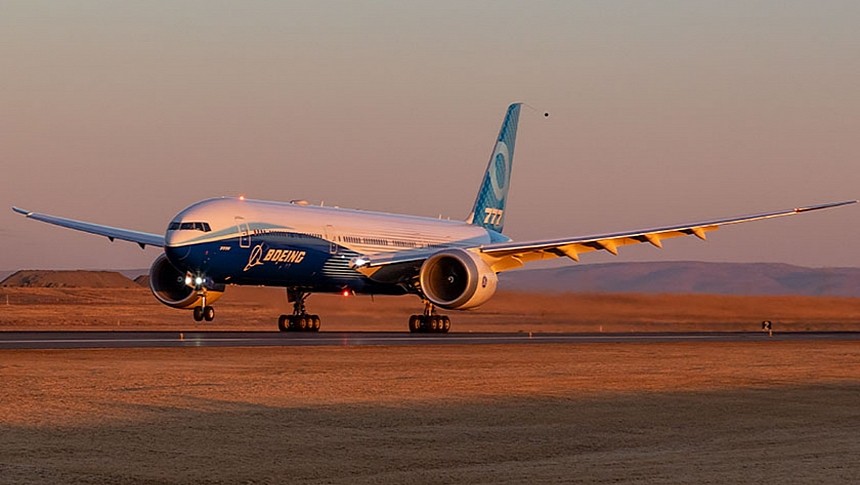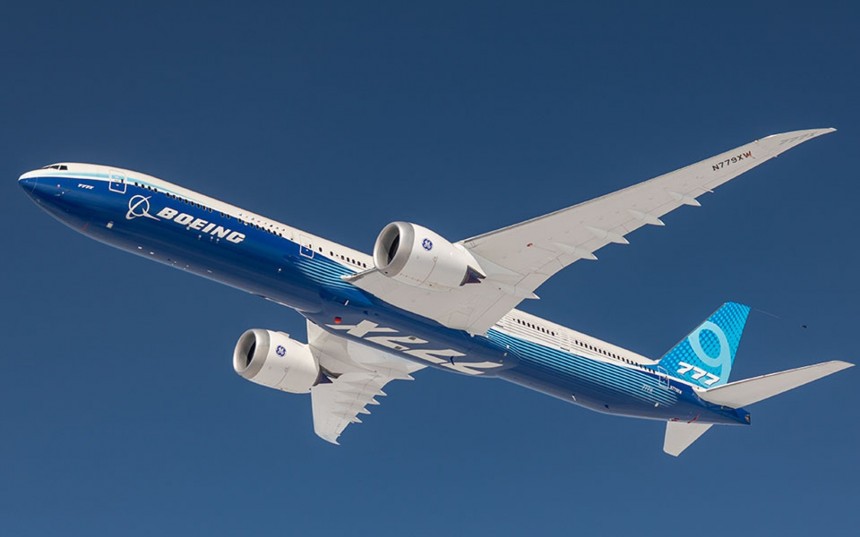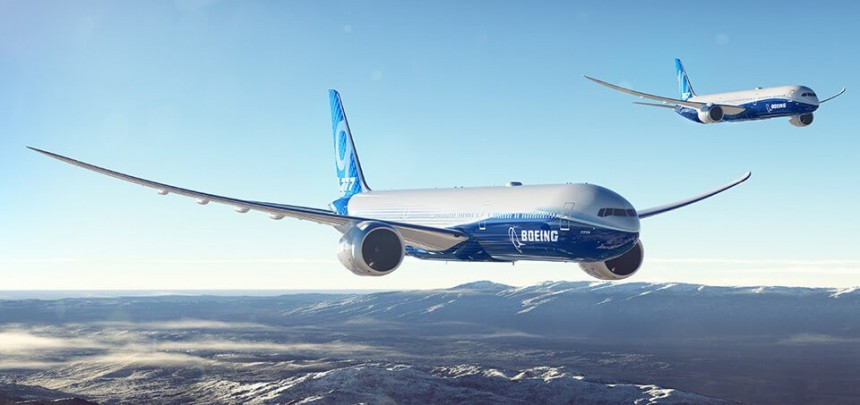From the end of the Second World War until roughly the early 90s, Boeing was the undisputed king of the civilian airliner space. In the early days of the jet age especially, it seemed that all routes, both foreign and domestic, traveled via a 707 or a 747. Sure, the occasional challenger presented itself. Big names like Lockheed, Convair, McDonnel Douglas, and De Havilland came and went, but nobody presented a legitimate threat to Boeing's supremacy in the airliner space for decades. That was until Airbus rolled on the scene and made Boeing sweat.
In 2019, Airbus finally surpassed Boeing for the title of the number one aerospace contractor in the world by revenue off the backs of the cutting-edge A320neo series and the monumental PR disaster of the 737 MAX. In its nine decades in the passenger airliner sector, Boeing has never been put on the ropes to such a savage and publicly visible degree. But don't expect Boeing to take this on the chin. The aviation titans from Washington State have a smoking gun waiting in the wing (pun intended) that could turn the tide of the industry back in Boeing's favor should everything go to plan. This is the Boeing 777X, and it's here to prove that Boeing can still innovate like the good old days.
To understand the impetus behind the 777X program, we need to understand the circumstances behind the competition between Boeing and Airbus even before the 737 MAX swung public opinions in the European's favor. In the early 2010s, Airbus announced they'd begun work on an all-new widebody twinjet airliner based on the legacy A330. Dubbed the A350, this novel jet would first fly in 2013 after multiple comprehensive redesigns and sported a maximum theoretical range of an eye-watering 8,800 nautical miles (16,300 km; 10,100 mi) with seating arrangements spanning from eight to ten abreast across three bespoke variants.
In so many ways, the A350 split the difference between Boeing's 777 and 787 Dreamliner in a way that had the potential to poach customers away from either American twin jet. This was not a challenge that Boeing could take lightly, and in 2011, they announced the development of an all-new, widebody, twin-engine airliner based on the 777 in service since 1995. Dubbed the 777X, Boeing's prime objective, as stated on the plane's one webpage, was to build " the world’s largest and most efficient twin-engine jet, unmatched in every aspect of performance." In order to achieve this, Boeing would need to take the basic design of the standard "triple seven" and apply the lessons learned from the smaller but impressively technology-dense 787 Dreamliner and apply them to what's hailed as the largest twinjet airliner ever built.
As with any airliner worth its investment, a solid foundation with a reliable and powerful engine was required to help garner the 777X mass market appeal. General Electric, Pratt & Whitney, and Rolls-Royce were all involved in submitting design proposals for Boeing's new flagship twin jet. But in the end, it was GE with their GE9X high-bypass turbofan jetting 110,000 lbf (490 kN) of thrust which was selected to power the 777X. Though slightly less powerful than the General Electric GE90 engines that powered the original 777, the GE9X was as much as ten percent more fuel efficient. In civil aviation terms stretched over tens of thousands of flights, such a difference is nothing short of immense.
Further goodies on the 777X platform come in the form of a comprehensively redesigned wing. One with an increased aspect ratio over the standard 777 from 9:1 to 10:1 and sporting a neat-looking folding wingtip arrangement that became the biggest visual signifier of the 777X's new design. All the while, the wing's primary load-bearing superstructure, known as the wing box, is sub-contracted to the aerospace division of, of all people, Subaru. It consists of a heavily titanium-reinforced construction, far more so than the legacy 777, for added strength and handling capabilities.
Meanwhile, production space once dedicated to the 787 Dreamliner at Boeing's plant in Everett, Washington, was reorganized to accommodate the 777X's production starting in the mid-2010s. The 777X lineup will consist of three bespoke models, the 777-8 and 777-9 for passenger service and the 777-8F freighter. With dimensions of 232 feet, 6 inches (70.87 m) long on the 777-8 and -8F, and 251 feet, 9 inches (76.73 m) in the longer 777-9, Boeing's largest twinjet is right on par in size with the Airbus A350 sporting Rolls-Royce Trent XWB turbofans. Meanwhile, the 777-8 and 777-9 can accommodate up to 395 and 426 passengers per flight, respectively.
Using thinner composite metal material in the fuselage, Boeing is able to stretch the seating of the 777X's 20-foot, four-inch (6.20 m) fuselage up to ten abreast, one more seat per row than that of the Airbus A350. In the all-important category of range, the 777-8 is also essentially at near-parity with the A350-1000. With a range of 8,745 nautical miles (16,190 km; 10,050 mi) to the A350-1000's 8,700 nautical miles (16,100 km; 10,000 mi), airline companies would be hard-pressed to ascertain which aircraft, one European and one American, would be the right choice to order for their fleet.
But if Boeing's official webpage literature is anything to go by, the 777X's more spacious fuselage, more customizable seating architecture, and enhanced refinement off the back of its technology sharing with the 787 Dreamliner make for an airplane that has that little extra advantage over Airbus. At least on paper, that is. With its first test flight taking place on Jul 25th, 2020, and four prototype test aircraft manufactured so far, a series of disappointing production delays relating to everything from supply chain issues, disputes with the FAA over incidents during flight testing, and even the recent global health crisis, Boeing doesn't expect to deliver the 777X in any of its three forms until 2025 at the very earliest.
With major airlines like Lufthansa, British Airways, Emirates, Qatar Airways, and All Nippon Airways still waiting on back orders of as many as 363 aircraft, Boeing is in a race against time to fulfill these multi-billion dollar production contracts before the parties involved lose their patience and opt for Airbus products instead. Keep in mind that some of these airlines have been waiting for their orders of 777Xs for a decade by now. But even so, there doesn't appear to be an issue on the part of Boeing for finding new customers for their still-unproved widebody jet. The latest order for another ten airframes came from Air India back in Jun 2023 as a part of a $70 billion initiative to completely revitalize their fleet of aircraft.
In the meantime, the four pre-production aircraft triple sevens are hard at work testing various aspects of passenger flight, with each aircraft dedicated to a specific aspect of the experience, from taxiing to takeoff and landing. But until international regulators determine beyond any reasonable doubt that the 777X is a rock-solid airframe, the recent tragedy of the 737 MAX, still fresh on everyone's mind, seems to have these sanctioning bodies not leaving anything to chance. But after two back-to-back unmitigated human tragedies in a row so recently, is it any wonder why the 777X's flight testing is dragging on for years past the sell-by date?
Well, after Boeing's CEO was denied a whopping $7 million annual bonus thanks to delays in the program over the last year, the pressure is on like never before. The truth of the matter is it's anyone's guess how long the 777X will take to receive its all-important FAA-type certification. But with the press at large not giving Boeing much slack in the wake of the 737 MAX, it's safe to say the oversights that caused those twin tragedies will not be allowed to repeat themselves, Boeing's industry reputation be damned.
But what do you all think? Are you excited to fly on Boeing's newest twin jet sometime soon? Or are you still apprehensive, even after almost five years since the 737 MAX was grounded? Let us know in the comments down below.
To understand the impetus behind the 777X program, we need to understand the circumstances behind the competition between Boeing and Airbus even before the 737 MAX swung public opinions in the European's favor. In the early 2010s, Airbus announced they'd begun work on an all-new widebody twinjet airliner based on the legacy A330. Dubbed the A350, this novel jet would first fly in 2013 after multiple comprehensive redesigns and sported a maximum theoretical range of an eye-watering 8,800 nautical miles (16,300 km; 10,100 mi) with seating arrangements spanning from eight to ten abreast across three bespoke variants.
In so many ways, the A350 split the difference between Boeing's 777 and 787 Dreamliner in a way that had the potential to poach customers away from either American twin jet. This was not a challenge that Boeing could take lightly, and in 2011, they announced the development of an all-new, widebody, twin-engine airliner based on the 777 in service since 1995. Dubbed the 777X, Boeing's prime objective, as stated on the plane's one webpage, was to build " the world’s largest and most efficient twin-engine jet, unmatched in every aspect of performance." In order to achieve this, Boeing would need to take the basic design of the standard "triple seven" and apply the lessons learned from the smaller but impressively technology-dense 787 Dreamliner and apply them to what's hailed as the largest twinjet airliner ever built.
As with any airliner worth its investment, a solid foundation with a reliable and powerful engine was required to help garner the 777X mass market appeal. General Electric, Pratt & Whitney, and Rolls-Royce were all involved in submitting design proposals for Boeing's new flagship twin jet. But in the end, it was GE with their GE9X high-bypass turbofan jetting 110,000 lbf (490 kN) of thrust which was selected to power the 777X. Though slightly less powerful than the General Electric GE90 engines that powered the original 777, the GE9X was as much as ten percent more fuel efficient. In civil aviation terms stretched over tens of thousands of flights, such a difference is nothing short of immense.
Meanwhile, production space once dedicated to the 787 Dreamliner at Boeing's plant in Everett, Washington, was reorganized to accommodate the 777X's production starting in the mid-2010s. The 777X lineup will consist of three bespoke models, the 777-8 and 777-9 for passenger service and the 777-8F freighter. With dimensions of 232 feet, 6 inches (70.87 m) long on the 777-8 and -8F, and 251 feet, 9 inches (76.73 m) in the longer 777-9, Boeing's largest twinjet is right on par in size with the Airbus A350 sporting Rolls-Royce Trent XWB turbofans. Meanwhile, the 777-8 and 777-9 can accommodate up to 395 and 426 passengers per flight, respectively.
Using thinner composite metal material in the fuselage, Boeing is able to stretch the seating of the 777X's 20-foot, four-inch (6.20 m) fuselage up to ten abreast, one more seat per row than that of the Airbus A350. In the all-important category of range, the 777-8 is also essentially at near-parity with the A350-1000. With a range of 8,745 nautical miles (16,190 km; 10,050 mi) to the A350-1000's 8,700 nautical miles (16,100 km; 10,000 mi), airline companies would be hard-pressed to ascertain which aircraft, one European and one American, would be the right choice to order for their fleet.
But if Boeing's official webpage literature is anything to go by, the 777X's more spacious fuselage, more customizable seating architecture, and enhanced refinement off the back of its technology sharing with the 787 Dreamliner make for an airplane that has that little extra advantage over Airbus. At least on paper, that is. With its first test flight taking place on Jul 25th, 2020, and four prototype test aircraft manufactured so far, a series of disappointing production delays relating to everything from supply chain issues, disputes with the FAA over incidents during flight testing, and even the recent global health crisis, Boeing doesn't expect to deliver the 777X in any of its three forms until 2025 at the very earliest.
In the meantime, the four pre-production aircraft triple sevens are hard at work testing various aspects of passenger flight, with each aircraft dedicated to a specific aspect of the experience, from taxiing to takeoff and landing. But until international regulators determine beyond any reasonable doubt that the 777X is a rock-solid airframe, the recent tragedy of the 737 MAX, still fresh on everyone's mind, seems to have these sanctioning bodies not leaving anything to chance. But after two back-to-back unmitigated human tragedies in a row so recently, is it any wonder why the 777X's flight testing is dragging on for years past the sell-by date?
Well, after Boeing's CEO was denied a whopping $7 million annual bonus thanks to delays in the program over the last year, the pressure is on like never before. The truth of the matter is it's anyone's guess how long the 777X will take to receive its all-important FAA-type certification. But with the press at large not giving Boeing much slack in the wake of the 737 MAX, it's safe to say the oversights that caused those twin tragedies will not be allowed to repeat themselves, Boeing's industry reputation be damned.
But what do you all think? Are you excited to fly on Boeing's newest twin jet sometime soon? Or are you still apprehensive, even after almost five years since the 737 MAX was grounded? Let us know in the comments down below.













